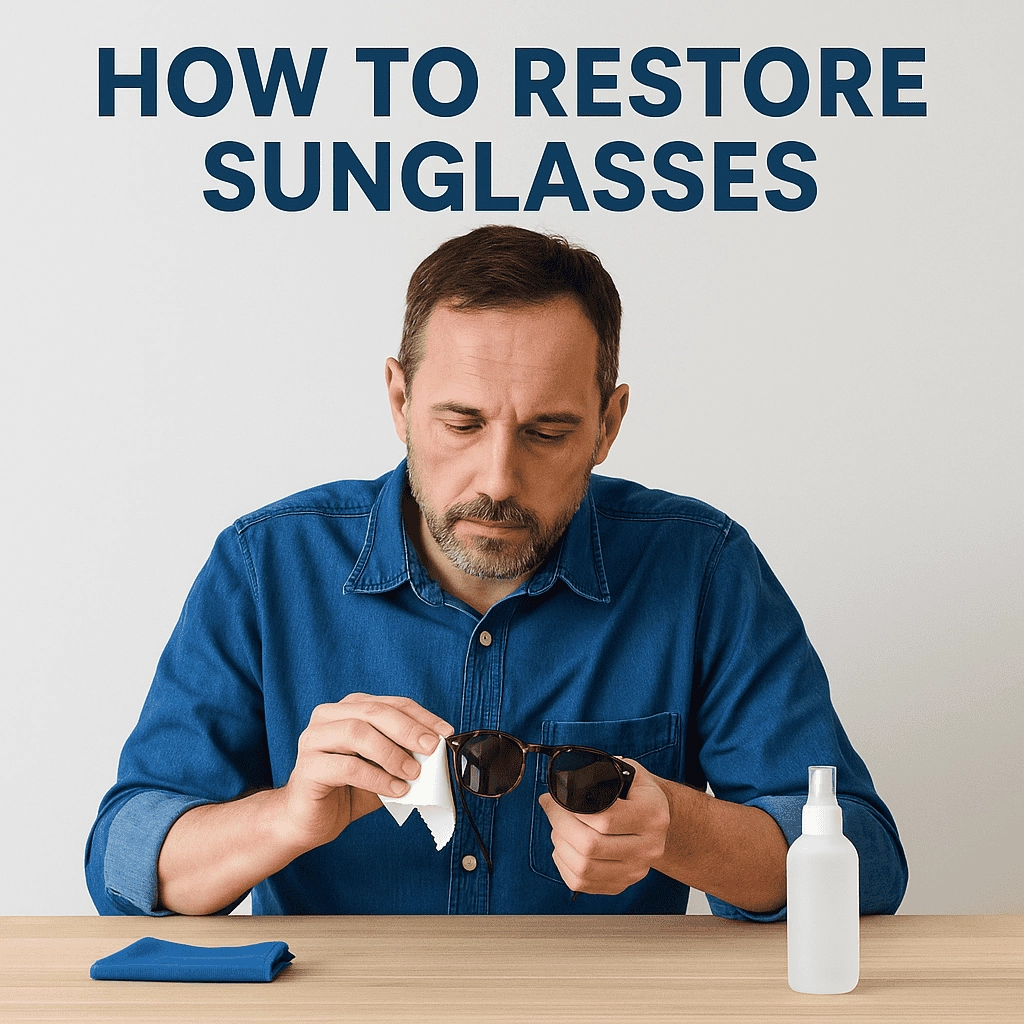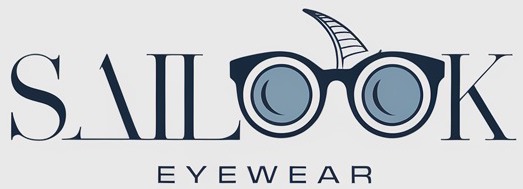Keeping sunglasses in top shape isn’t just about looks — it’s about function and brand perception too. Scratched lenses, dull frames, or loose arms can make even a premium pair feel cheap. But here’s the deal — restoring sunglasses doesn’t always require professional services. This article walks you through everything a brand, distributor, or product specialist needs to know about polishing and restoring sunglasses, from tools and techniques to long-term maintenance. Whether you’re a product manager, sourcing agent, or private-label brand owner, these insights will help protect your eyewear investment.

1. Why do sunglasses frames get dull or scratched?
Sunglasses frames go through a lot — from heat exposure to rough handling. For most eyewear brands, this kind of wear and tear isn’t just cosmetic. What’s the real story? It affects the perceived quality and customer satisfaction. Common causes include daily use, poor storage practices, and contact with chemicals like sunscreen or hair spray.
For example, acetate frames may lose their sheen due to friction or prolonged exposure to UV light. Metal frames might develop minor corrosion spots when left in humid areas. Even TR90, known for its resilience, can scratch if stored without a protective pouch.
Then there’s mechanical damage — accidental drops, getting tossed into a handbag, or rubbing against keys can cause micro-abrasions. Frames with matte finishes tend to lose texture faster compared to glossy ones. That’s why understanding these factors helps with both prevention and restoration strategy.
| Frame Material | Common Wear Type | Causes |
|---|---|---|
| Acetate | Surface dullness | Friction, UV exposure |
| Metal | Minor rusting | Humidity, skin oils |
| TR90 | Surface scratches | Improper storage |
2. What tools and materials are safe to use for restoration?
Restoration starts with using the right tools. Use the wrong ones, and you’ll end up doing more harm than good. This is where it gets interesting… Most professionals recommend starting with non-abrasive supplies: a microfiber cloth, lens-safe polish, and mild soap.
For acetate and metal frames, you can safely use polishing compounds like polyWatch or Novus Plastic Polish. These remove light scratches without damaging the material. Cotton buffs or Dremel tools with low RPM can be used, but only with care and experience.
Avoid household cleaners like alcohol, bleach, or ammonia — they strip protective coatings and discolor materials. Don’t use tissues or rough fabric. These may leave micro scratches even during cleaning.
An ultrasonic cleaner is a great addition for brands dealing with bulk restoration. It removes hidden dirt from hinges and lens grooves without dismantling the frame.
| Tool | Suitable For | Caution Note |
|---|---|---|
| Microfiber Cloth | All materials | Avoid reuse without washing |
| PolyWatch Polish | Plastic/acrylic lenses | Not for coated lenses |
| Ultrasonic Cleaner | Hinges, nose pads | Avoid long exposure |
3. How do you clean sunglasses before polishing them?
Before you polish, you need a clean surface. Dirt, oil, and grime can act like sandpaper under a polishing pad. First, rinse the sunglasses under lukewarm water. Then apply a drop of mild dish soap with your fingers, not a brush. Scrub gently across the frames and lenses.
Use a soft toothbrush only for crevices or hinge areas. Rinse thoroughly and pat dry with a fresh microfiber towel. Don’t air dry — mineral spots from water can affect polish results.
Clean lenses and frames separately when possible. Lenses with anti-reflective coatings are especially prone to damage during improper cleaning.
Brands should consider including these instructions in product packaging. It reduces returns caused by cleaning-related issues.
| Cleaning Stage | Action | Purpose |
|---|---|---|
| Rinse | Lukewarm water | Remove surface dust |
| Soap Wash | Mild soap + finger scrub | Remove oils and smudges |
| Dry | Microfiber towel | Prevent water spots |
4. Can you polish acetate frames at home?
Yes — and done right, it’s incredibly effective. Acetate is a thermoplastic, which means it responds well to gentle heat and buffing. Ready for the good part? You don’t need professional tools to get solid results.
Start with hand buffing using a soft cotton cloth and polish paste. Rub in small circular motions, applying even pressure. For heavier oxidation, use a polishing wheel with a low-speed Dremel. Be cautious — high heat can warp acetate.
Some brands use a flame-polishing technique. It creates a mirror finish but requires expertise and isn’t recommended for small-scale users.
Always clean thoroughly afterward to remove compound residue. A second dry buffing pass enhances the shine and texture.
| Step | Tool | Outcome |
|---|---|---|
| Manual Buff | Soft cloth + paste | Removes dullness |
| Dremel Polish | Buffing pad | Restores high gloss |
| Flame Polish | Butane torch | Mirror shine (for pros) |
5. What’s the process to polish metal frames?
Metal frames need a different approach. But here’s the kicker… Not all metals react the same way. Stainless steel and titanium require non-corrosive polishes, while cheaper alloys might tarnish.
Use a lint-free cloth and a small amount of metal polish like Flitz or Brasso. Avoid contact with lenses and nose pads. Buff gently, paying special attention to arms and bridge areas.
Rust spots? Use a baking soda paste or fine-grade steel wool (0000). But this should be done carefully to avoid scratching nearby coated surfaces.
Screws and joints benefit from a dab of lubricating oil after cleaning — especially if the hinges were squeaky.
| Metal Type | Recommended Polish | Note |
|---|---|---|
| Stainless Steel | Flitz polish | Avoid abrasive tools |
| Titanium | Jewelry-grade polish | Gentle buff only |
| Alloys | Brasso or vinegar mix | Test on small area first |
6. How can you fix small scratches on lenses?
This is where things get tricky. Lens materials are soft, and coatings make them even more vulnerable. You might be wondering… Is there a safe way to remove scratches?
Minor scratches on polycarbonate lenses can be faded using a plastic-safe compound like Displex. Avoid any product that contains alcohol or ammonia. For coated lenses (anti-glare, UV), polishing can remove the coating along with the scratch — which often looks worse.
A safer alternative? Replace the lens. Many brands offer aftermarket lens replacement services, especially for high-volume SKUs.
To test scratch depth, gently drag a fingernail across it. If you can feel it, it’s too deep for polish and might need replacement.
| Lens Type | Polish Option | Risk Level |
|---|---|---|
| Polycarbonate | Displex or similar | Low if uncoated |
| Coated Plastic | Avoid polishing | High — coating damage |
| Glass | Professional only | Risk of shattering |
7. What should you do if the hinge or arm is loose?
Loose arms can make sunglasses feel cheap. It’s often a simple fix — if you have the right tools. Here’s the bottom line… A tiny screwdriver and threadlocker go a long way.
Use an optical screwdriver to gently tighten hinge screws. Don’t over-tighten; that could strip the thread. For wobbly hinges, apply a drop of blue Loctite on the screw thread before tightening.
Plastic hinges with metal cores may need heat reactivation. Briefly heat with a hot air gun and realign.
Always inspect hinge springs. If broken, they usually require replacement — not repair.
| Issue | Solution | Tool Needed |
|---|---|---|
| Loose screw | Tighten carefully | Optical screwdriver |
| Wobbly arm | Add threadlocker | Loctite Blue |
| Bent hinge | Heat and bend | Heat gun + pliers |
8. Are there professional services for sunglasses restoration?
Professional restoration services do exist — and they’re worth it in certain cases. Let’s look at why that matters. If you’re dealing with luxury or rare models, DIY repairs might cause irreversible damage.
Specialists can recoat lenses, replace nose pads, refinish acetate, and polish metal without losing structural integrity. They also restore brand stamps and replace missing rivets or logos.
For brands offering customer service, having a go-to restoration partner is a smart move. It extends product lifecycle and boosts customer loyalty.
Costs vary by region, service level, and frame material — but average between $20–$80 per unit.
| Service | Description | Approx. Cost |
|---|---|---|
| Lens Recoating | UV / AR layer restoration | $25–$50 |
| Frame Refinish | Buffing + polishing | $15–$30 |
| Nose Pad Replace | New silicon or PVC pads | $5–$10 |
9. How do you maintain restored sunglasses long term?
Once restored, sunglasses need care to stay that way. Here’s where things often go wrong… Brands ship polished frames only to have them scratched during transit.
Use hard cases with soft interiors for bulk shipping. Include a microfiber pouch for end-user storage. Always pack lenses facing upward or shielded with soft inserts.
Recommend customers clean lenses with lens-safe spray, not tap water. And encourage them to keep frames in low-heat areas — no dashboards or near radiators.
Routine care instructions should be printed inside packaging or hangtags.
| Best Practice | Reason | Tools |
|---|---|---|
| Use hard case | Prevents transit damage | EVA molded case |
| Clean properly | Avoids scratches | Lens-safe spray |
| Avoid heat | Maintains frame shape | Store indoors |
10. Can you restore designer sunglasses?
Yes — but proceed with caution. Designer frames use premium materials and unique finishes. This is where it gets interesting… You could devalue them with a poor repair.
For example, polishing too aggressively can fade printed logos or signature texture effects. Luxury hinges or spring mechanisms are often proprietary and require OEM parts.
If restoration is attempted, document every step — especially for warranty claims or resale value protection. Better yet, use certified repair partners who specialize in luxury brands.
| Brand Tier | Risk Level | Recommendation |
|---|---|---|
| Fast Fashion | Low | DIY acceptable |
| Mid-Tier | Medium | Skilled DIY or pro |
| Luxury | High | Certified repair only |
11. How do coatings affect restoration efforts?
Coatings can make or break a restoration job. Most sunglasses today feature anti-reflective, UV-blocking, or mirrored coatings — which are sensitive to abrasion. But here’s the kicker… Trying to polish these lenses can often do more harm than good.
If a coating begins to peel, it usually can’t be repaired. Attempting to buff it may create an uneven patch that makes the damage more noticeable. In this case, full lens replacement is often the only real solution.
Some manufacturers offer replacement lens services or support authorized resellers in ordering coated lenses in bulk. For brands with high return rates due to peeling, consider revising supplier coating specs.
Before attempting restoration, verify the lens type with the factory or your supplier. A small test area can confirm how it reacts to polish or soap.
| Coating Type | Risk Factor | Solution |
|---|---|---|
| Anti-reflective | High | Avoid polish, replace |
| UV-block | Medium | Gentle cleaning only |
| Mirrored | Very High | Replace, don’t restore |
12. What are common mistakes during restoration?
Even experienced teams make errors. And those errors often lead to unnecessary replacements. You might be wondering… what’s the most frequent mistake?
Over-polishing is at the top of the list. Too much pressure or the wrong material can burn or deform acetate. Using household cleaners like Windex or bleach can corrode metal and strip protective layers. Skipping the cleaning step before polishing traps debris — creating deeper scratches instead of removing them.
Other missteps include applying heat unevenly, using recycled polishing pads, or skipping post-restoration inspections.
To avoid these, establish a consistent restoration SOP (Standard Operating Procedure) that includes tool selection, polishing duration, and QC checklists.
| Mistake | Result | Prevention |
|---|---|---|
| Over-polishing | Burn marks or warping | Use low-pressure buffing |
| Wrong chemicals | Surface damage | Stick to lens-safe options |
| No cleaning prep | New scratches | Pre-clean every frame |
13. How often should you restore your sunglasses?
Restoration isn’t about frequency — it’s about timing. Here’s where timing gets critical… Waiting too long can lead to irreversible damage, while overdoing it can shorten product life.
For brands or distributors, a bi-annual inspection is ideal. If the product sees heavy use (e.g. demo samples, rental units), quarterly evaluations are smarter. End-users should restore only when noticeable dulling or scratching occurs — not as a routine process.
Frames with printed branding or gradient lenses need more cautious handling. Instead of full polishing, spot-repair techniques are better.
Keep a log of past restorations for high-value inventory. This helps you track aging patterns and predict maintenance needs over time.
| Usage Level | Suggested Frequency | Reason |
|---|---|---|
| Casual Wear | Once per year | Light wear over time |
| Daily Use | Twice per year | Faster wear |
| Professional Sample | Quarterly | Heavy handling |
14. How can you tell if restoration is even possible?
Not all frames are worth restoring. And knowing this upfront saves time and money. Let’s get real… If the material is cracked or the lens coating is shredded, polishing won’t help.
Plastic frames like injection-molded TR90 don’t polish well. When scratched, they usually need part replacement. Deep cracks, warped temples, or heat damage also suggest replacement over repair.
Do a quick flex and visual test. If the frame creaks or resists realignment, the internal structure is likely compromised.
Brand reputation matters too — sending a poorly restored product to a customer can do more damage than simply replacing it.
| Issue Type | Restore or Replace? | Comment |
|---|---|---|
| Surface dullness | Restore | Easy buffing fix |
| Cracked frame | Replace | Structural failure |
| Peeling lens coat | Replace | No safe repair method |
15. What are some preventive measures to avoid damage?
Restoration is great — prevention is better. For eyewear brands, shipping clean, polished frames doesn’t end the job. The key is smart, proactive protection.
Start with packaging: Use soft microfiber pouches inside molded EVA cases. These keep pressure and friction off the lenses during transit. Always apply a thin lens film for scratch resistance, especially for mirrored finishes.
Train staff and distributors on proper handling during photography, sampling, and display. Include “Care Instructions” on hangtags or product inserts — not just cleaning tips, but storage rules.
Recommend the end user store frames in shaded, room-temperature areas and never in hot vehicles. Suggest cleaning every two weeks using mild soap and microfiber.
| Action | Benefit | Tools Needed |
|---|---|---|
| Use case & pouch | Prevent transit wear | EVA + microfiber |
| Include care tags | Reduces returns | Printed inserts |
| Teach handling | Avoids demo damage | Distributor training |
Conclusion
Polishing and restoring sunglasses isn’t just a vanity task — it’s smart brand management. From identifying the right tools and techniques to avoiding common mistakes, everything you’ve read in this guide helps ensure your eyewear stays in top condition. Whether you’re managing bulk orders or refining your brand’s after-sales services, small restoration improvements can lead to stronger customer satisfaction and fewer returns. Take these tips, create a process, and keep your product quality in check — frame by frame.
FAQ
Q1: What is the best way to restore sunglasses frames?
Use microfiber cloths, lens-safe polish, and avoid household cleaners. Always clean the frame thoroughly before polishing.
Q2: How does polishing remove scratches from sunglasses?
It smooths the top layer of plastic or acetate using soft abrasives. This reduces the visibility of shallow scratches.
Q3: Can I use toothpaste to remove scratches from my sunglasses?
No. Most toothpaste contains abrasive particles that damage coatings and cause further micro-scratches.
Q4: How can I tell if my sunglasses need restoration or replacement?
If the frame is cracked, lenses are deeply scratched, or coatings are peeling, replacement is the safer option.
Q5: Is it safe to polish polarized sunglasses?
Only if done carefully with non-abrasive materials. Avoid polishing coated areas unless you’re ready to replace the lens.

